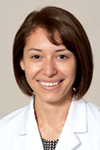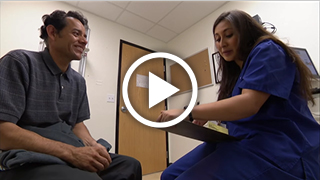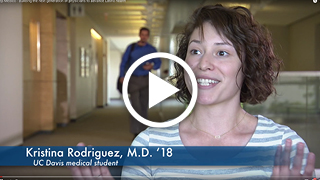Program News

Better serving California's plurality
Latinos make up 39 percent of California’s population, but only 4.7 percent of its physicians. To help close the gap, UC Davis and The Permanente Medical Group (TPMG) are launching a new initiative to produce more doctors who are well-prepared to advance health for the state’s largest ethnic group.

Healdsburg native and UC Davis ACE-PC student
Kristina Rodriguez is among her family’s first
generation to attend college or medical school.
Her goal is to provide medical care to the Latino
community.
The overall goal of the Prep Médico program – short for “Preparando Estudiantes Para Ser Médicos,” or “Preparing Students to Be Physicians” – is to enhance the diversity in the physician workforce and in Northern California that will provide cultural and linguistically sensitive health care.
Doing so could play a significant role in reducing the effects of health disparities. One in three California Latinos is poor or near the poverty line and the population faces higher-than-average rates of obesity, food insecurity and overall health, as well as lack of insurance and increased use of acute care in lieu of preventive care.
“Research shows that for racial and ethnic minority populations, concordance in race and language between patients and physicians enhances patient satisfaction, improves adherence to treatment, enhances prevention – the list goes on and on,” said David Acosta, M.D., associate vice chancellor of Diversity and Inclusion at UC Davis Health and director of the new program.

Video: Prep Médico - Advancing Latino
health 
Video: Prep Médico - Building the next
generation of physicians to advance Latino
health
“Patients are very selective of whom they’ll trust and open up to, and that’s especially true for racial and ethnic groups,” added program manager Mercedes Piedra. “If I speak Spanish as a care provider, (Latino) patients will tell me things that they wouldn’t otherwise.”
For undergrads, Prep Médico will nurture interest and readiness for medical school. For medical students themselves, UC Davis will offer a certification on Latino health delivery with extra opportunities for immersion and language development.
TPMG and UC Davis physicians will play critical roles in teaching, mentoring and providing rotations to students at both levels. For example, medical students will participate in rotations with physicians who are experts in providing culturally-responsive care to large numbers of Latino patients.
Program leaders expect to serve approximately 100 students annually at all levels.
